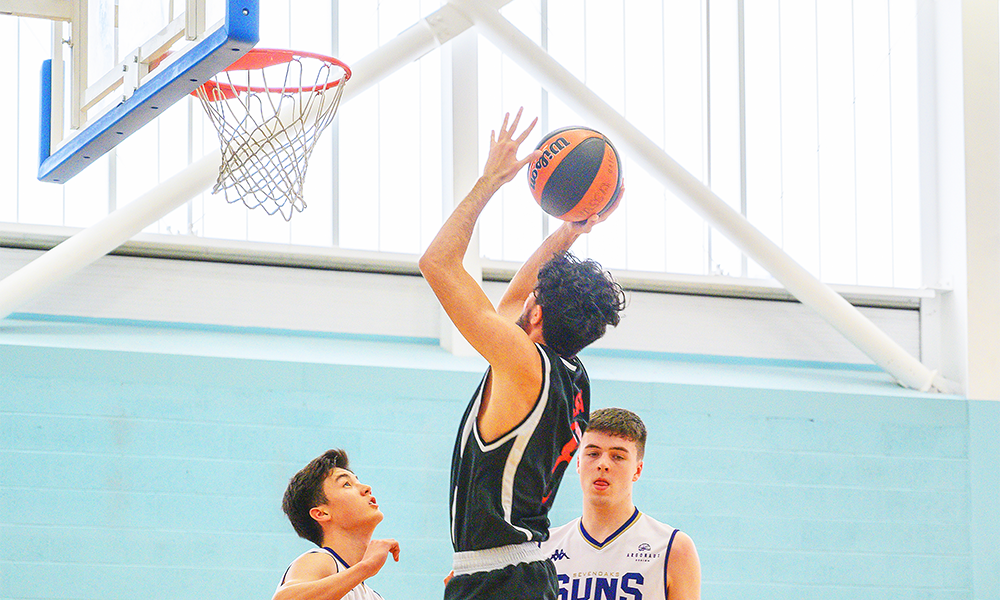Newham All Star Sports Academy marks two decades as it continues to use sport to fight knife crime and support young people in east London

Subscribe to our free Wharf Whispers newsletter here
“I’m still so passionate about it, 20 years after we started,” said Natasha Hart. “NASSA is one big family – once you set foot in there, you don’t want to come out.
“We have volunteers who started with us when their children were small – they’ve grown up and left, but their parents are still helping out.
“The young people who have been through our hands stay in touch, even two decades later.”
This year will mark the 20th anniversary of the day Natasha took her two sons to Balaam Park in east London to teach them basketball, offering to make it a weekly treat.
They invited their friends, word got round and soon she was coaching groups of more than 30 kids.
The demand was there.
With £20 in the bank she registered Newham All Start Sports Academy (NASSA) as a charity and never looked back.
In 2008, her son, Anthony Okereafor, launched NASSA’s Carry A Basketball Not A Blade campaign in response to the fatal stabbings of two of his friends within weeks of each other.
Its work, tackling knife crime and gang culture, while breaking down barriers between youngsters and the Metropolitan Police, has seen more than 100,000 young people aged 10-18 attend its sessions.
In that time NASSA’s teams have also won league titles, its initiatives have been recognised with a multitude of awards and Natasha has received an MBE as its CEO.
But the demand for the charity’s blend of sports and education is unrelenting.
The pandemic and cost of living crisis have taken their toll and its work is sorely needed because it’s ultimately about more than a child learning the discipline of sport – it’s in the business of creating community.

addressing a need
“NASSA is always attracting young people,” said Natasha.
“Some want to meet new friends, some want to play sports, some want to be away from something and others want to progress and develop.
“We are always learning from them because it’s not only about the child.
“They’re a brother, a sister, a son or a daughter.
“Once the young person trusts us we find the whole family joins in.
“From a single session they get involved and the ball starts rolling – we’ll be asking how are they doing in school, what life is like – then after a few weeks you build that trust.”
Those relationships allow the charity to help address a wide range of issues facing those living locally.
It works to tackle domestic violence, addiction and unhealthy peer pressure and knife crime through a blend of mentoring, coaching, support and education.
“If we can find a solution to a problem then we will, or we can refer people on to specialists who can help,” said Natasha.
“We always want to be growing as a charity, to reach more people and embrace new ideas. For example, when we first started our workshops with the police, the relationship with young people was poor.
“Now each year we play a friendly game with serving officers and that builds trust – the young people can see they are human and that they play basketball, which is so important because they are the people you need to call when you’re in trouble.”

NASSA: creating community
Over its first two decades NASSA has been successful in securing support from the likes of Excel, Tate And Lyle, UEL, Sport England, L&Q, London City Airport, the Mayor Of London, Newham Council, the Royal Docks Team and Basketball England.
“We’ve been very lucky with the supporters we have, the volunteers, the coaches and the sponsors who all enable us to deliver,” said Natasha.
“We have a rich history with what we’ve done in this community and a great track record in helping change and save the lives of people in this part of London.
“That we are able to do this is very satisfying for all those involved with the charity whether it’s our sponsors, our staff or me.”
To mark its 20th year, NASSA is planning a renewed focus on generating funds for its activities, with an ambition to roll out its mission to other parts of the capital.
A fundraising event is set to be held in June at Brick Lane Music Hall in Royal Docks as a celebration of the charity’s anniversary to help spread the word about the work its doing and offer businesses and individuals new ways to get involved in its activities.
“We want the event to help us reach new supporters and a new audience and for them to be able to come together with our existing sponsors,” said Natasha.
“It’s an opportunity for us to showcase what we have done over the past 20 years and what we are going to do in the future.
“We know we have expertise and I would love us to be able to roll that out to the surrounding boroughs.
“With knife crime the way it is in London, our work is needed more and more and I believe this is a model that could work across the city, helping to save more young people’s lives.”

key details: NASSA
NASSA, based in Royal Docks, is always looking for support from volunteers, businesses and organisations to help deliver its sport and education programmes.
Full details of NASSA’s fundraising event in June will be published in due course.
If you or your company think you could help in any way by providing resources or funding, you can contact the charity here
Read more: How Dez Amore has smashed burgers and pasta together under one brand











